
The Intellivision is a home video game console released by Mattel Electronics in 1979. The name is a portmanteau of "intelligent television". Development began in 1977, the same year as the launch of its main competitor, the Atari 2600. In 1984, Mattel sold its video game assets to a former Mattel Electronics executive and investors, eventually becoming INTV Corporation. Game development ran from 1978 to 1990 when the Intellivision was discontinued. From 1980 to 1983, more than 3 million consoles were sold.

Aquarius is a home computer designed by Radofin and released by Mattel Electronics in 1983. Based on the Zilog Z80 microprocessor, the system has a rubber chiclet keyboard, 4K of RAM, and a subset of Microsoft BASIC in ROM. It connects to a television set for audiovisual output, and uses a cassette tape recorder for secondary data storage. A limited number of peripherals, such as a 40-column thermal printer, a 4-color printer/plotter, and a 300 baud modem, were released. The Aquarius was discontinued in October 1983, only a few months after it was launched.

BurgerTime, originally released as Hamburger in Japan, is a 1982 arcade game developed by Data East initially for its DECO Cassette System. The player is chef Peter Pepper, who must walk over hamburger ingredients located across a maze of platforms while avoiding characters who pursue him.

Utopia is a 1982 strategy video game by Don Daglow released for the Intellivision and Mattel Aquarius. It is often regarded as among the first city building games, and credited as "arguably the earliest ancestor of the real-time strategy genre." In July 2010, the game was re-released on Microsoft's Game Room service for its Xbox 360 console and for Games for Windows Live.
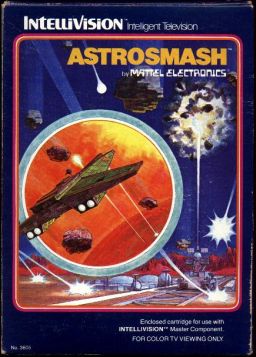
Astrosmash is a fixed shooter video game for the Intellivision console, designed by John Sohl, and released by Mattel Electronics in 1981. The player uses a laser cannon to destroy falling meteors, bombs, and other targets.

Intellivision World Series Major League Baseball is a baseball video game (1983) designed by Don Daglow and Eddie Dombrower, and published by Mattel for the Intellivision Entertainment Computer System. IWSB was one of the first sports video games to use multiple camera angles and present a three-dimensional perspective. It was also the first statistics-based baseball simulation game on a video game console; all prior console baseball games were arcade-style recreations of the sport.

Shark! Shark! is an Intellivision game originally designed by Don Daglow, and with additional design and programming by Ji-Wen Tsao, one of the first female game programmers in the history of video games. The player is a fish who must eat smaller fishes in order to gain points and extra lives while avoiding enemies such as larger fishes, sharks, jellyfish, lobsters and crabs. After eating a certain number of fish, the player's fish grows in size and is thus able to eat a larger selection of fish. However, while the larger fish becomes a bit faster, he is less agile than the small fish and has a harder time avoiding enemies.
The Entertainment Computer System (ECS) was an add-on peripheral for the Intellivision. It was Mattel Electronics' second attempt at creating a peripheral to upgrade the Intellivision into a home computer, and was rushed into production to appease the Federal Trade Commission after they began fining Mattel for false advertising following consumer complaints about the repeated delays in releasing the originally planned Intellivision Keyboard Component add-on. The ECS includes the Computer Module, Music Synthesizer, and additional hand controllers; each sold separately. Any Intellivision Master Component is compatible and a requirement to use the system. A second requirement is a cartridge plugged into the ECS, although any ECS or Intellivision cartridge will do; pressing anything on the Intellivision hand controllers will then bring up the three-option menu of BASIC, CARTRIDGE or MUSIC.

Sea Battle is a multiplayer strategy game released by Mattel for its Intellivision video game system in 1980. In the game, players command fleets of naval vessels attempting to invade the harbor of their opponent.
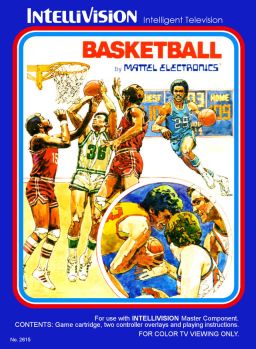
Basketball is a multiplayer sports video game produced by Mattel and released for its Intellivision video game system in 1980. The players each control a basketball team competing in four timed quarters of game play. Mattel obtained a license from National Basketball Association and used the NBA logo in its box art, making it first basketball video game to be licensed by the NBA. NBA Basketball does not use any official team or player names. It was sold by Sears for its private-label version of the Intellivision console, the "Super Video Arcade," without the NBA name or logo.
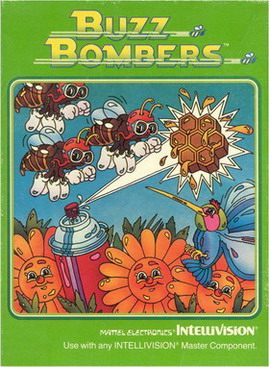
Buzz Bombers is a fixed shooter video game developed by Mattel Electronics for its Intellivision system and released in 1982. Mattel's reaction to Atari's popular Centipede, the player controls a can of bug spray trying to ward off swarms of bees.

Star Strike is a single-player video game, released by Mattel for its Intellivision video game system in 1981. The Intellivision's best-selling game in 1982, with over 800,000 copies sold, Star Strike was inspired by the attack on the Death Star in the 1977 film Star Wars. The player must drop bombs on alien weapons silos before Earth moves into range.

Hover Force is a video game published by INTV Corporation for the Intellivision video game system in 1986. The game was initially developed by Mattel Electronics with the intent of it being played in 3-D, but the company was shut down before it could be released; INTV, after acquiring the Intellivision assets from Mattel, re-tooled the game, which pits players against a terrorist group laying siege to a city, and released it itself.

Auto Racing is a racing video game written by Larry Zwick and released by Mattel for its Intellivision video game console in 1980. Auto Racing pits two players against each other using a top-down perspective on one of five different race courses. Auto Racing was released under the same name by Sears for its private-label version of the Intellivision console, the "Super Video Arcade."
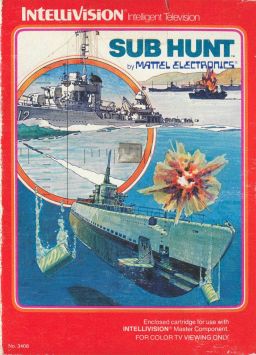
Sub Hunt is a submarine simulator video game released by Mattel for its Intellivision video game system in 1982. Players take control of a wolfpack of submarines attempting to stop an enemy invasion.

Skiing is a sports video game produced by Mattel and released for its Intellivision video game system in 1980. Up to six players compete individually on either a downhill or slalom course to see who can complete the course the fastest. For the game's initial release, Mattel obtained a license from the U. S. Ski Team and used its name and logo in the game's box art. In 1988, INTV Corporation released an enhanced version of the game entitled Mountain Madness: Super Pro Skiing.
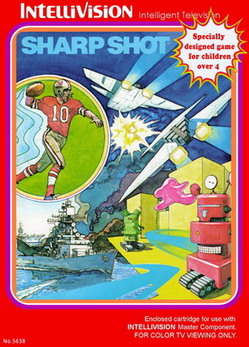
Sharp Shot is a video game released by Mattel for its Intellivision video game system in 1982. Specifically marketed towards younger children, Sharp Shot is a collection of four simple games where the object is to score points by correctly timing shots at various targets.

NFL Football is a sports video game developed by Mattel and released for its Intellivision video game system in 1979. The players each control a football team competing in a standard four-quarter game. Like Mattel's other sports video games, NFL Football did not use any official National Football League team names or player names, even though Mattel obtained a license from the NFL and used the league's logo in its box art. NFL Football has been cited as the first football video game to have a playbook.
The Standard Television Interface Chip or STIC is a video encoder chip produced by General Instrument as AY-3-8900/AY-3-8900-1 and used on the Mattel Intellivision.

















